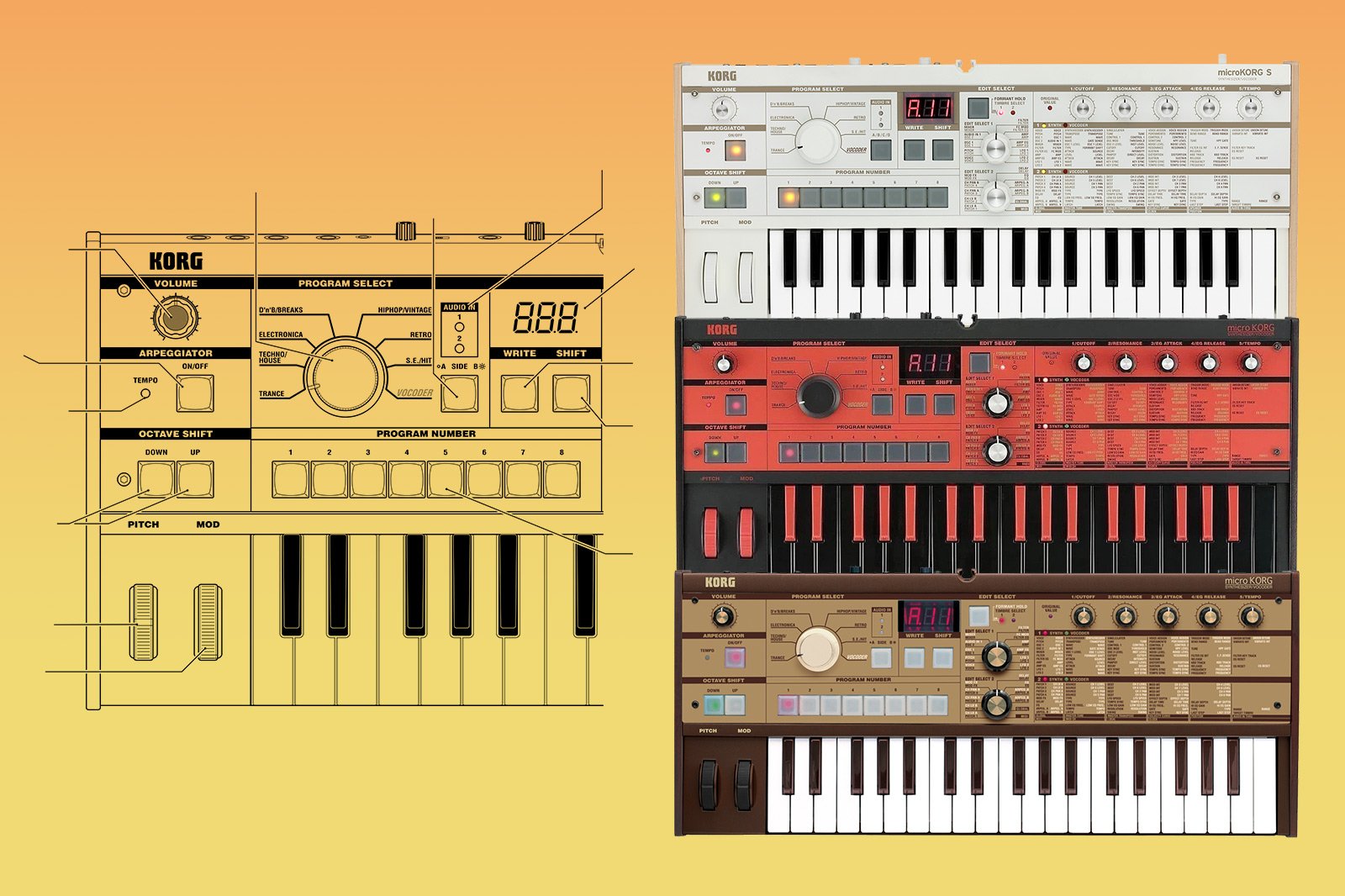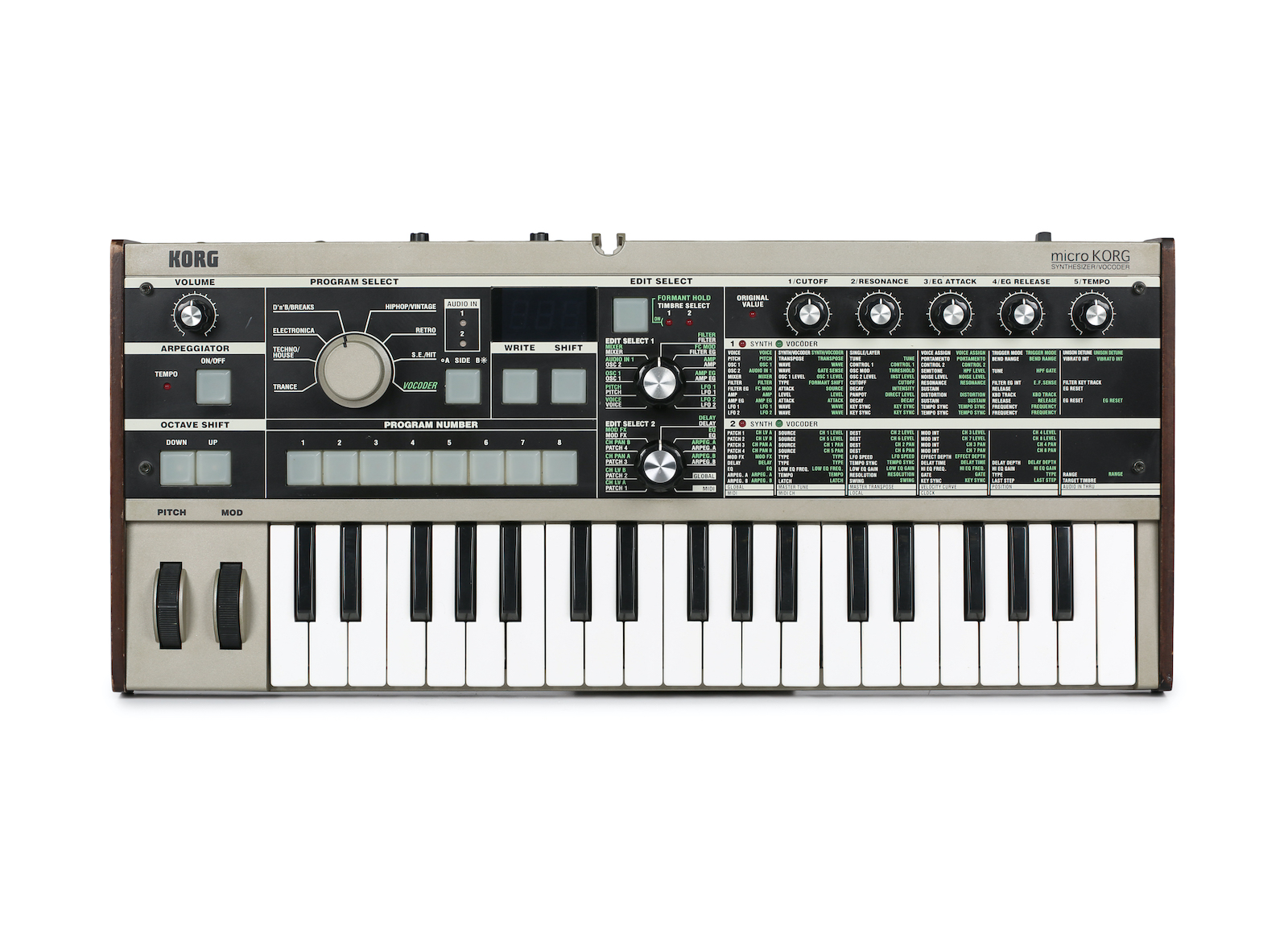In 2002, Korg released the microKORG: a small virtual analog synth criticized by reviewers at the time for its tiny keys, lack of knobs, and seemingly undefined purpose in the music market. However, it turned out to be one of the best-selling synthesizers ever. Today, you can find the microKORG’s versatile sound pretty much anywhere in the modern music landscape. It’s been re-released in no fewer than ten different iterations, always commanding excellent sales, despite most of those re-releases being simple color changes. Why is this 37-mini-keyed beast so popular?
Deciphering the microKORG’s success takes some additional context. It was never cutting-edge tech, and, as much as others have tried, its triumph can’t be replicated. Surely, its accessibility has played a part in the microKORG’s stellar sales, with a price and design that welcomes first-timers. Adding fuel to the fire, the timing of its release couldn’t have been better. Synthesizers found stronger footholds in nearly every genre in the early 2000s, causing many artists to suddenly consider adding a touch of synth to their sound for the first time—a perfect calling for the microKORG. That’s not the whole story, though.
The microKORG wasn’t just a successful product; it aged like fine wine, largely due to a very capable synth engine that grew as you learned to explore its deeper layers. That’s not common in beginner instruments, which is what the microKORG was initially pegged as. In reality, it’s a full-featured synth that’s only styled and priced like a starter instrument. What was the reasoning behind such an unusual product strategy, and how did Korg know it would pay off?
Making the microKORG
The microKORG’s story truly begins a few years before its release, in 2000, with a different product: Korg’s digital MS2000 (pictured below). The MS2000 looked a lot more like the analog emulation it was than the Microkorg. Its dark blue slanted face, sprinkled with over 80 knobs and buttons, begged to be tweaked and manipulated in real-time. Where there wasn’t a knob or button, surface writing and flow diagrams filled the gaps in the spirit of vintage analogs. Slice off the keyboard, and it could have easily filled in on any '80s era sci-fi movie set as a ship control panel or evil lair switchboard.
But more importantly, the MS2000 sounded great, reliably mimicking the warm timbres of Korg’s analog machines while offering a lot more versatility due to an outstanding analog modeling synth engine.
The MS2000 was well-reviewed, but there were a few deal breakers. Its limited four-note polyphony and relatively simple mod matrix were a bit weak, considering it was rather expensive. Reportedly, sales weren’t a disaster, but it certainly wasn’t the microKORG.
In the early 2000s, digital technology was moving very fast. Not that it’s slow today, but back then, the differences in product capabilities that were even just one year apart were more noticeable. Your neighbor’s new Gateway PC absolutely smoked your shameful pre-Y2K Compaq that you actually purchased only months earlier. No buying PC games right off the K-mart shelves willy-nilly; you kept an eagle eye on those minimum system requirements or risked an afternoon crying in your Pepsi Blue. Anyway, for Korg’s digital MS2000, this ended up manifesting in two ways. The first is that its tech was considered old news within a year. The second was that, not long after its release, Korg was able to make the MS2000’s chipboard much smaller.
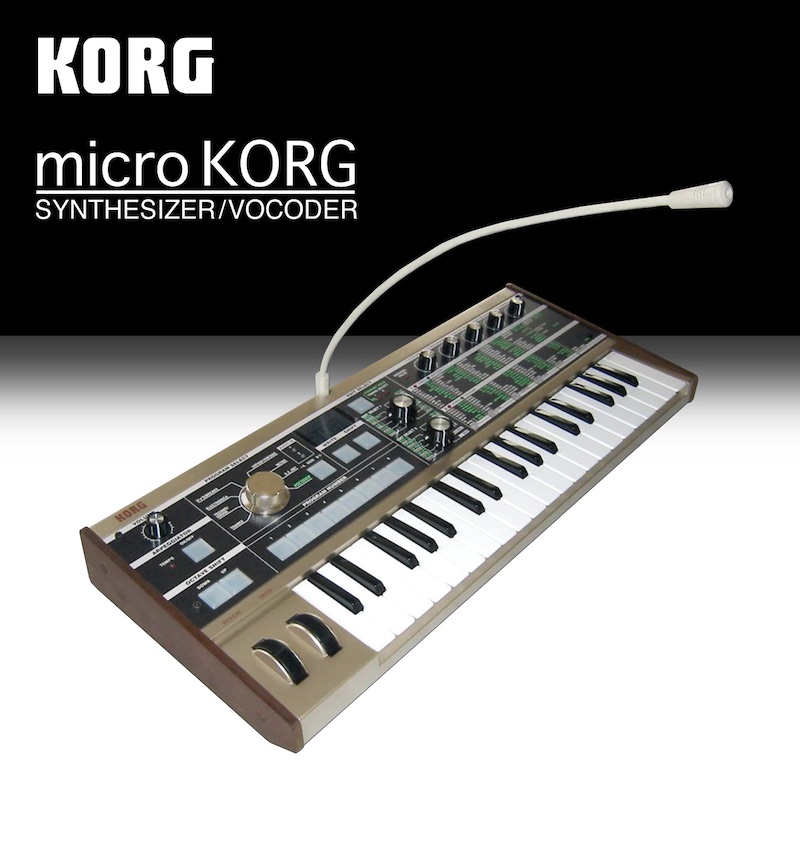 Korg's microKORG, as pictured on the front page of its user manual.
Korg's microKORG, as pictured on the front page of its user manual.
Looking for a new way to capitalize on the MS2000’s beautiful-sounding engine, Korg likely took inspiration from their very successful Electribe groovebox products launched around the same time. They stuck the shrunken-down MS2000’s engine in a smaller body, sacrificing the nearly one-knob-per-function workflow and larger keys in favor of portability and a massive price cut. They also threw in the ability to power the unit with six AA batteries.
Almost in direct contrast to the MS2000, the mircroKORG’s initial reviews weren’t spectacular. Some stuck their noses up at the minikeys and limited number of surface controls. Others didn’t jive with the permanent face labeling’s heavy focus on presets. Market feasibility was questioned from day one. However, the critics were proven very wrong about the microKORG. The little thing oozed fun and accessibility, a synth for doers, and sales took off.
Even today, the mircoKORG’s portability and convenient form factor are highly conducive to music making. Small size, portable power, and fast operation mean fewer obstacles. It’s enough to push you into musical action when you may otherwise hesitate. Because creation is always just a few movements away, it gets you playing more—people seem to dig that.
Anatomy of the microKORG
The microKORG’s design can give off an entry-level synth vibe at first, with preset-focused labeling and deceptively few knobs. But it packs a lot under the hood, pretty much whatever you want to get into from a standard subtractive synthesis standpoint. Let’s quickly dive into the microKORG’s sound design details to fully appreciate this little wonder’s capabilities.
Layout and UX
The microKORG is just over 20 inches wide and weighs under 5 lbs; you could probably fit it in the same spot your keyboard is resting in right now. It cradles nicely under one arm, and its battery-powered functionality means you don’t need to drag a power cable around. A sturdy hard plastic build and wooden sides provide enough protection to take it around without a case. All-in-all, it’s a tremendously convenient instrument.
Most of the microKORG’s face panel is covered in labels that help you navigate the presets and sound design workflow. The engine was originally designed for a synth with over 80 knobs and buttons, a far cry from the microKORG’s 25 or so. The microKORG gets around this by using its bigger dials to filter down to the smaller ones with various buttons to fill in the gaps.
You start by using the biggest of microKORG’s dial knobs to choose a preset category to edit. Next, you move to the two “Edit Select” knobs to choose sound design categories, like oscillator 1 & 2, amp, filter, etc. Finally, the five horizontally-oriented knobs on the right-hand side are used to edit actual parameter values.
Capability and Synth Engine

The microKORG gives you four-note polyphony, widdled down to two notes if you choose to layer two sounds, or “timbres” as Korg calls them (that's right—the microKORG is bi-timbral). Within each timbre, you get two oscillators with a generous and unique selection of sound sources between them. The signal then goes through a multimode filter, amp, and modulation section before hitting the microKORG’s global effects and EQ.
Oscillator 1 has more capability, offering saw, square, triangle, and sine waveforms, a noise generator, vox wave, and even DGWS waves which use harmonic additive synthesis. Oscillator 2 offers saw, square, and triangle waveforms. Two control knobs offer different shaping parameters depending on the chosen waveform. For example, with a square wave selected, control 1 sets the pulse width, and control 2 sets the depth of PWM (attributed by LFO 1). There are some unconventional hidden gems in these oscillator parameters, like cross modulation on the sine wave and the ability to add more harmonics to a DWGS wave. You can use external audio as a sound source as well, processing it through the microKORG's filter, amp, effects, and delay.
The oscillator signals feed into the microKORG’s filter, complete with 12dB lowpass, 24dB lowpass, high pass, and bandpass modes. You get a dedicated filter envelope and key tracking, and the filter does self-oscillate. The amp has a standard ADSR envelope, distortion control (on/off only), key tracking, panning control, and overall volume control (useful for level balancing when layering sounds).
The two LFOs each offer saw and sample & hold wave settings. LFO1 also packs in square and triangle waveforms. LFO 2 adds the option of a peculiar positive-only square wave shape (great for trill-like pitch modulation) and the ever-useful sine wave. Each LFO can be tempo-synced, note-synced, and key-synced.

For each microKORG patch, you get four “patch routes.” Each patch route allows you to pair a modulator to a destination and set the modulation amount. You have eight modulation sources and eight modulation destinations to choose from. It’s not the world’s most complex mod matrix but enough for some in-depth sound design. (Modulation details from the manual can be seen above.)
Effects + EQ + Extras
After the patch routings, the “timbre” building is complete, and the signal feeds into the microKORG’s global effects and EQ. The effects are split into two categories: mod effects and delay effects, each of which allows you to pick one of three modes. The modulation effects include a chorus/flanger, an ensemble effect, and a phaser. The delay effects offer a stereo delay, cross delay, and L/R delay, all of which can be tempo-synced.
Just before the signal departs via the stereo output, a simple two-band EQ provides one final opportunity for shaping and polish.
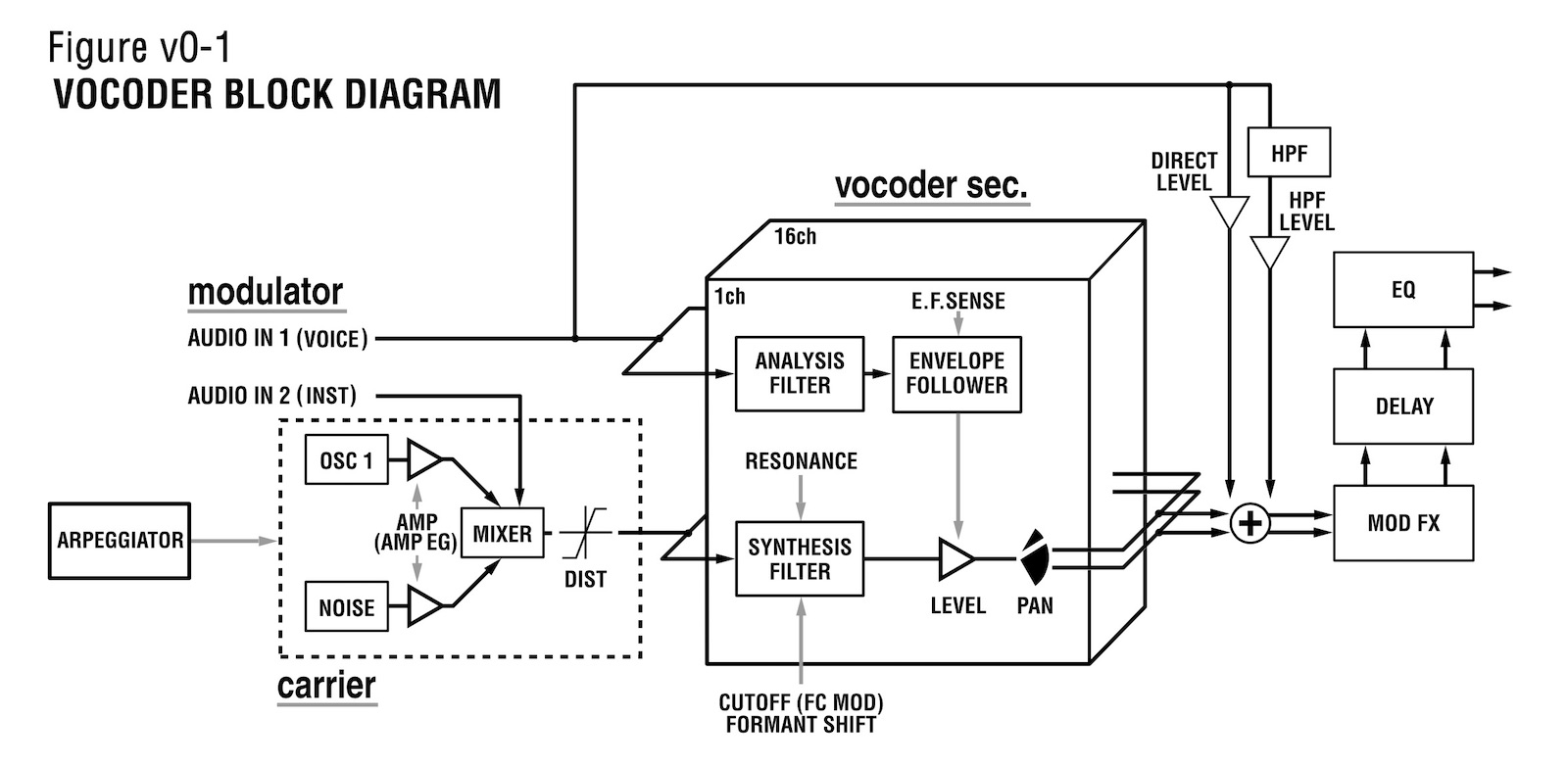
Lastly, you get an arpeggiator and vocoder. The arpeggiator features chord and step modes with a healthy assortment of options and adjustments. The vocoder, complete with a so-so mic (but support for external input!) doesn’t have the highest fidelity—it's only an eight-band affair. But hey, it’s there.
For the money, the microKORG offers a ton of sound-shaping resources, giving this versatile mini-beast the flexibility to nest in a wide range of soundscapes.
microKORG Throughout the Ages
Over the past 20 years, the microKORG has seen several iterations ranging from purely aesthetic changes to complete rebuilds. If sales are any indication, people simply like buying the microKORG and then buying it again in different colors. Original version aside, here are some highlights from the microKORG's history.
microKORG Reverse Keys Limited Edition
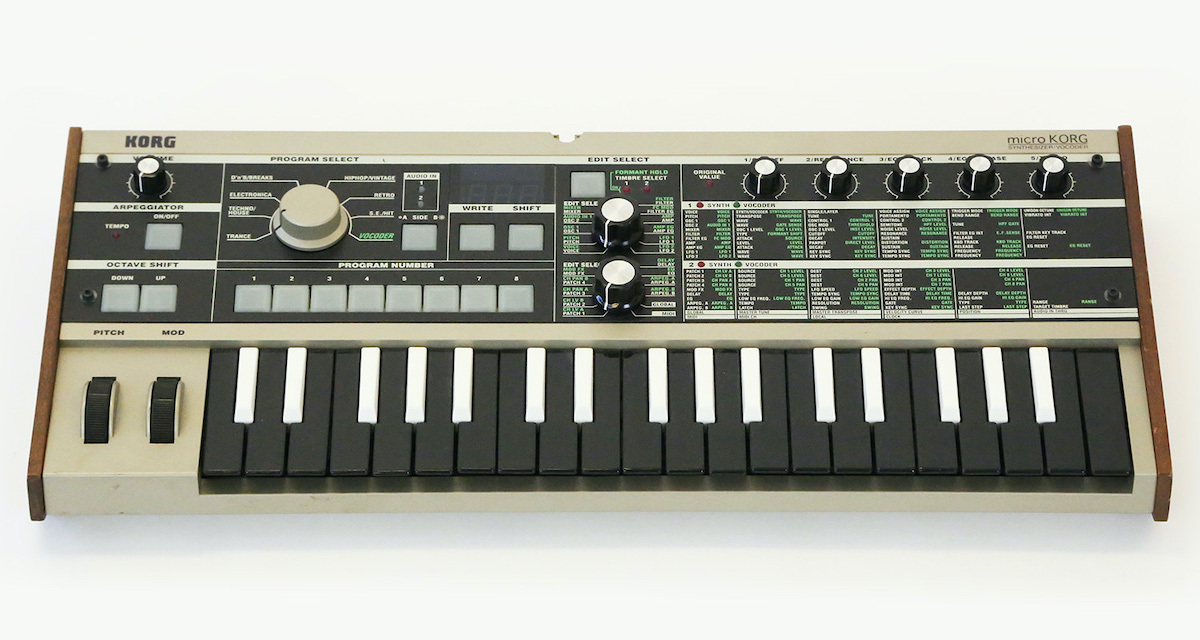
In 2007, when celebrating the fifth anniversary of the microKORG, Korg introduced the first in a series of aesthetic re-imaginings of the microKORG architecture—this one sporting an inverted key color scheme. Otherwise, it's entirely identical to the original microKORG; same functionality, same presets, same everything. Just awesome reversed key colors.
microKORG XL
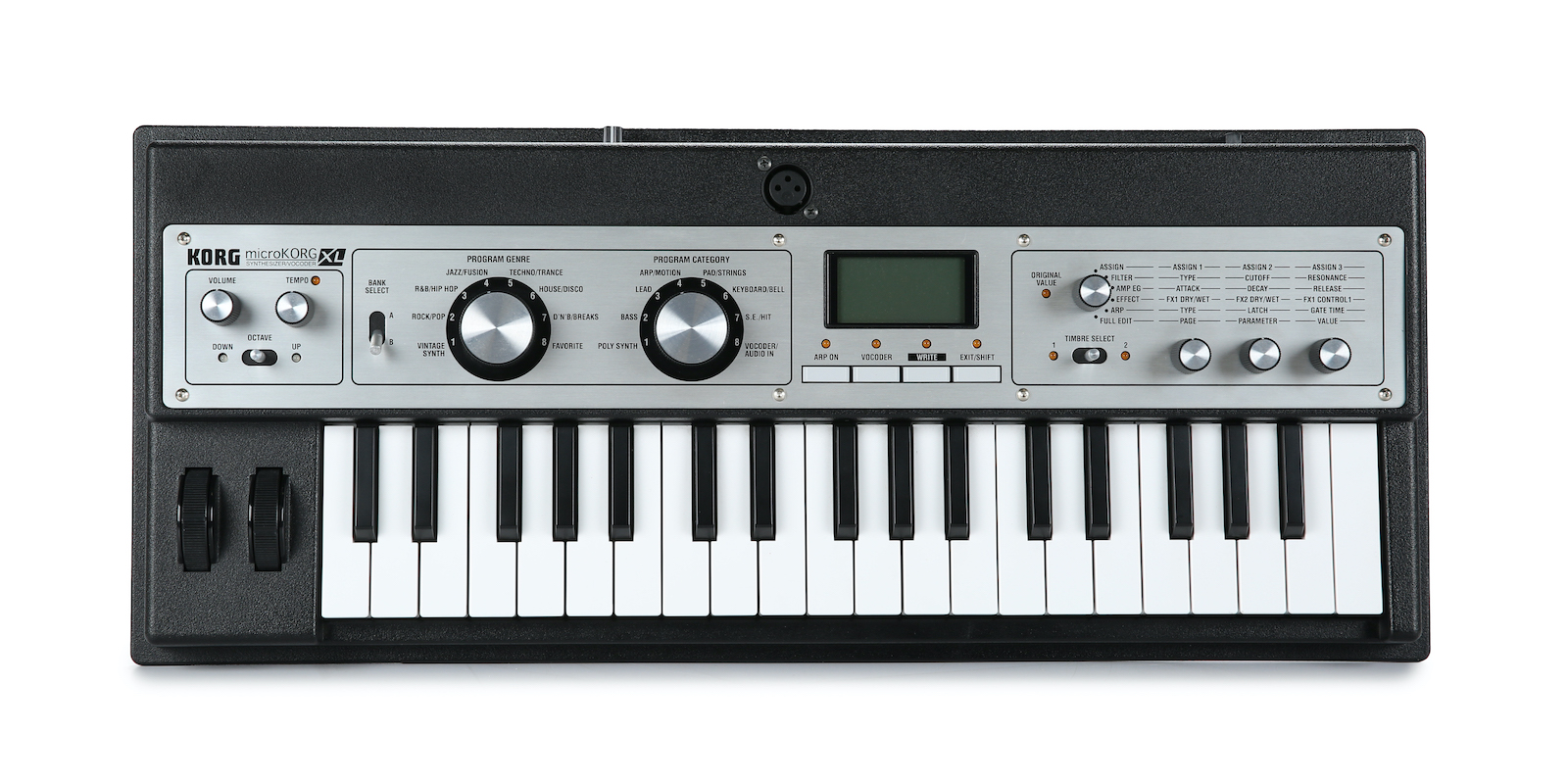
Almost a completely different instrument, the microKORG XL (2009) replaced the MS2000 synth engine with Korg’s Multi Modelling Technology (MMT) sound engine. This gave the XL more sonic breadth and some welcome standard keyboard sounds like electric piano, organ, and clavinet.
The XL also sported a different design and layout, eight-note polyphony, and a bunch of additional effects. It did a lot more than the original microKORG, but it also provided a very different experience. For example, navigation was moved from the simple yet charming surface labels of the original in favor of menu-diving through an LCD screen.
microKORG 10th Anniversary Limited Editions (Red/Black)
Purely aesthetic modifications were introduced in the microKORG 10th Anniversary Edition (2012), introducing red-on-black and all-black color schemes.
microKORG XL+
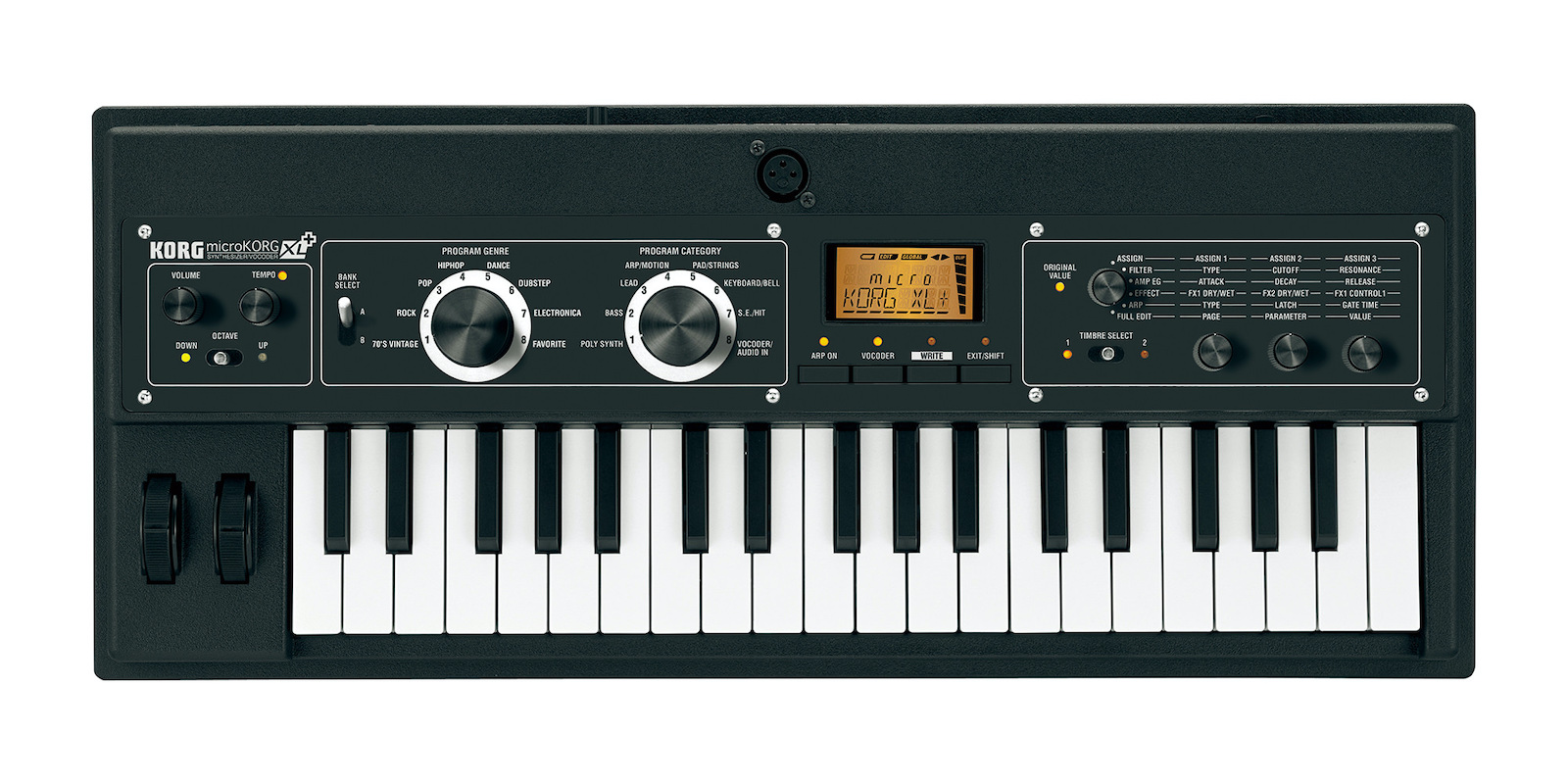
The microKORG XL+ (2012) is essentially the same synth as the XL but with some aesthetic changes, new presets, and new preset categories. For example, the XL’s Jazz fusion category was removed to make room for more modern genres, like Dubstep.
microKORG Gold Limited Edition
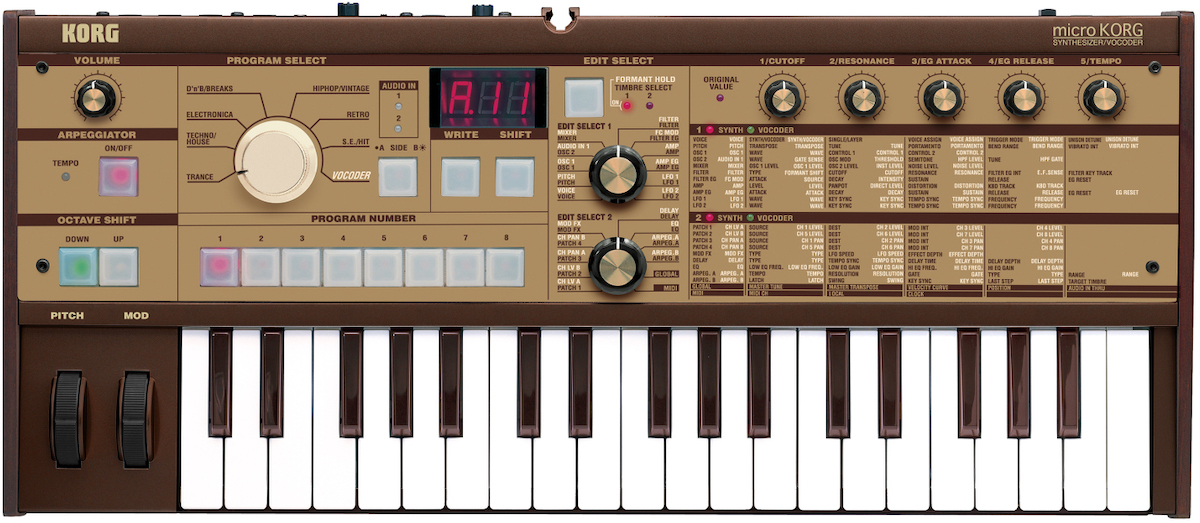
Korg slapped a gold color scheme on the mircoKORG Limited Edition (2013) to mark the company’s 50-year anniversary. Lots of brown plastic—even the accidental keys are brown!
microKORG S
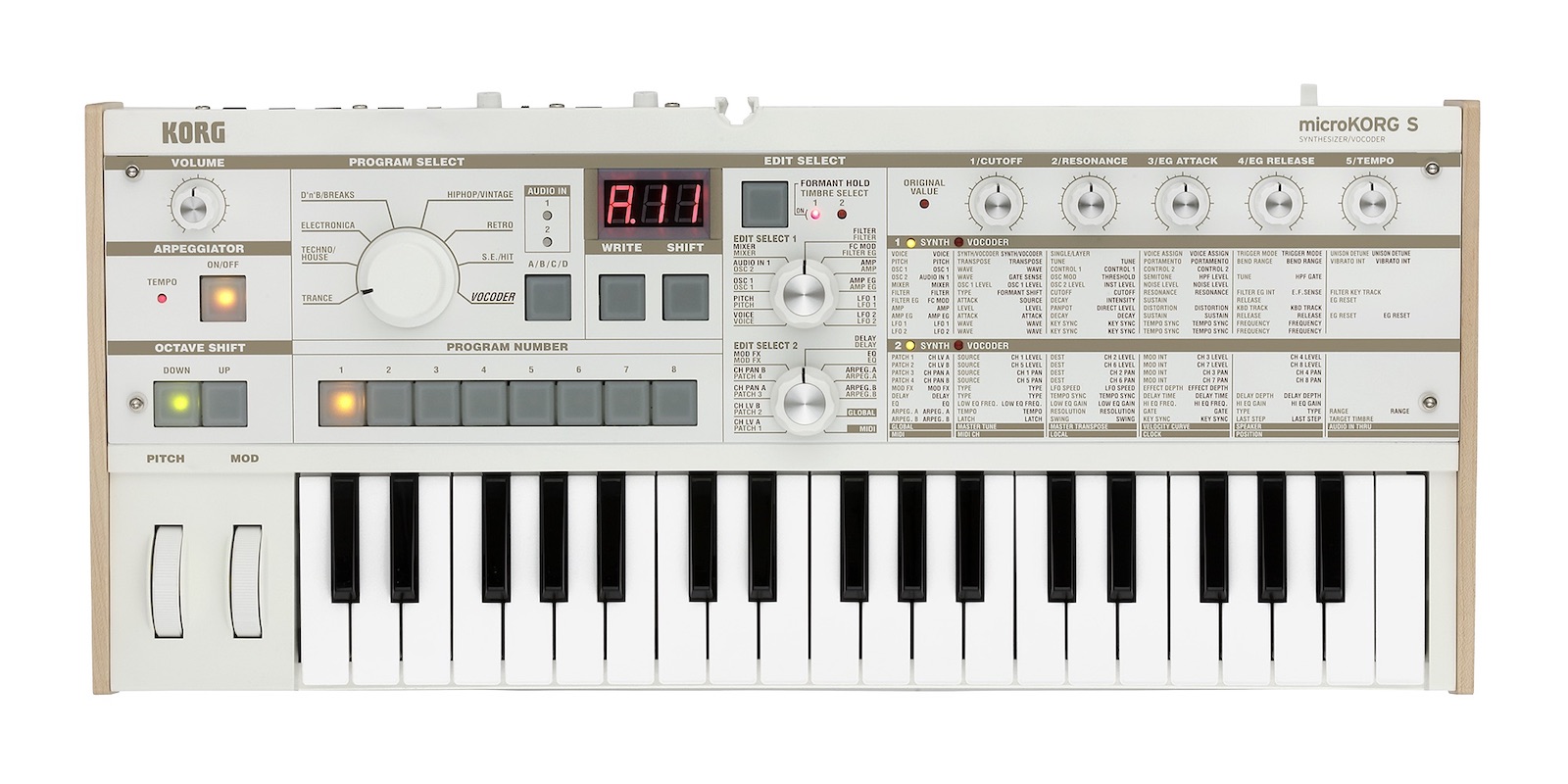
The microKORG S (2016) completed the microKORG’s self-contained culture of convenience by adding the last piece of the puzzle: onboard speakers. It also featured a white color scheme with lighter accented wood side panels and doubles the original microKORG’s patch memory.
microKORG Platinum Limited Edition
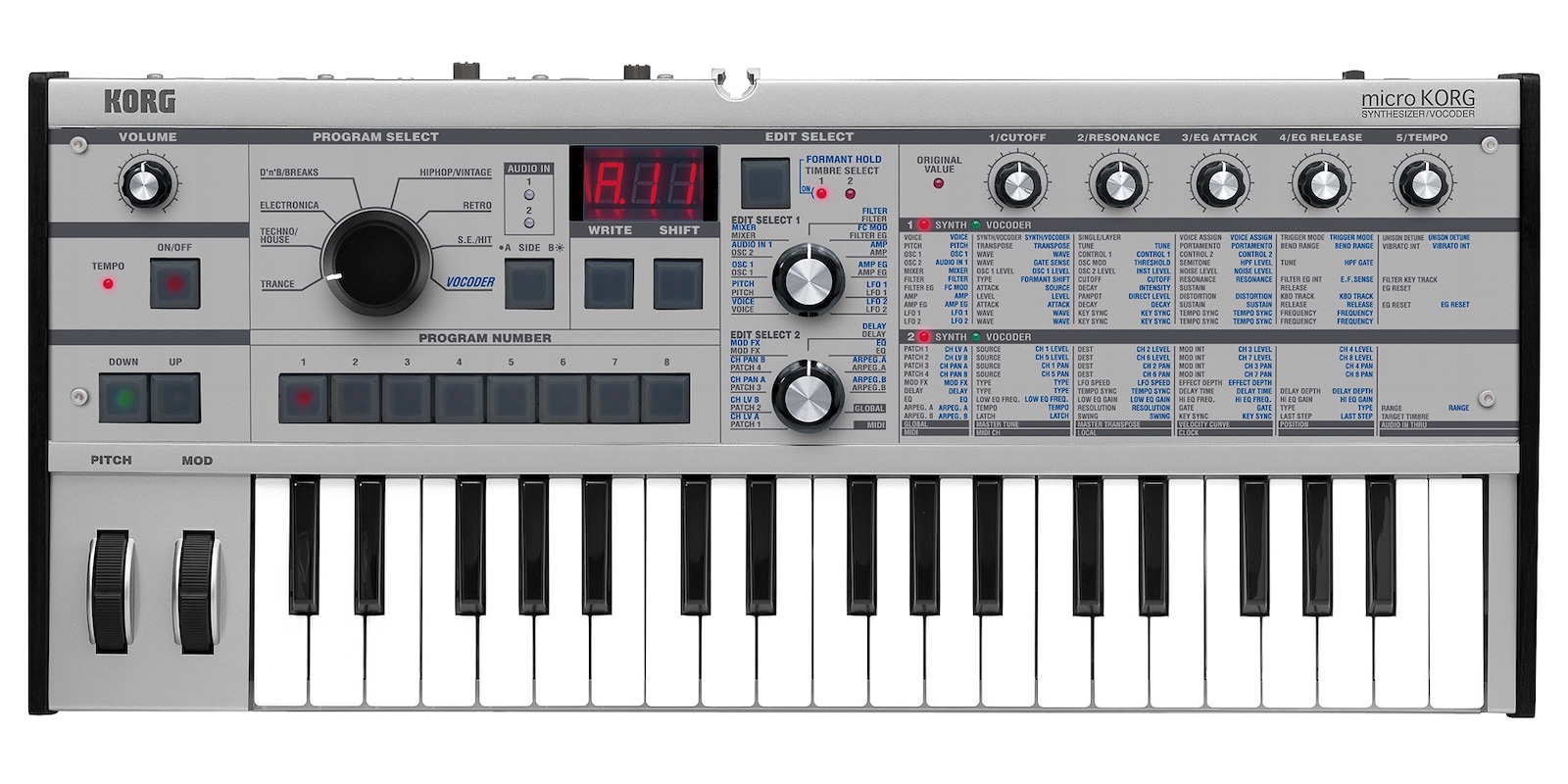
Similar to the earlier red/black editions, the mircoKORG Platinum Edition (2017) was a strictly aesthetic change to a silver housing in celebration of the microKORG’s 15th birthday.
micrKORG Crystal Limited Edition
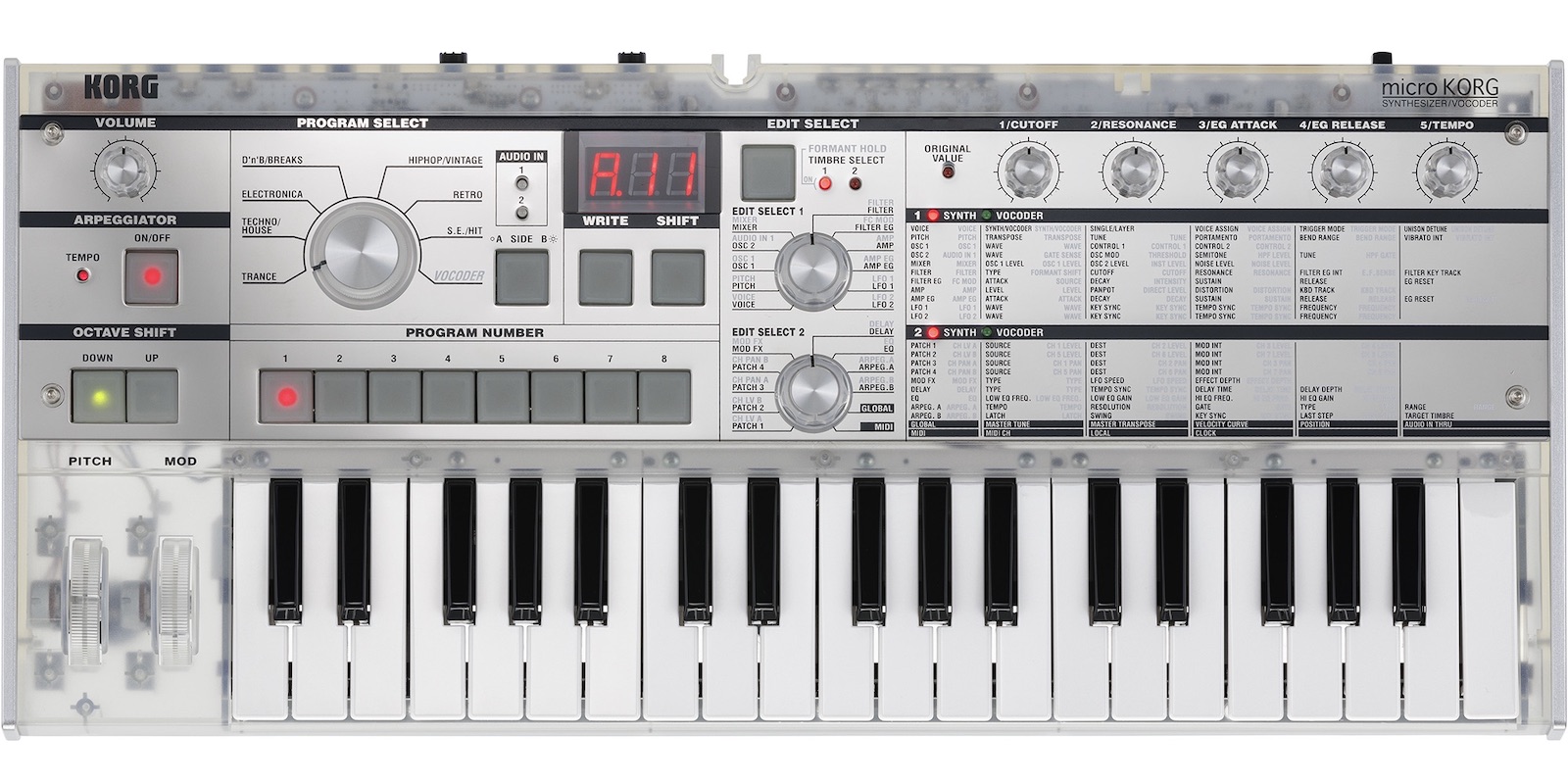
Coming out later this year, the microKORG Crystal is another aesthetic changeup to celebrate the microKORG’s 20-year anniversary. It’s the most noticeable style change yet, incorporating a semi-translucent body, stainless mirror finish face panel, and aluminum sides.
The microKORG Today
microKORGs are still selling, they’re still showing up on new records, and still sharing the stage with countless artists. With its own iconic sound and collection of characteristics that we’ve yet to find bundled together anywhere else, Korg’s little giant isn’t going anywhere. There are other portable synths and better analog emulations, but nothing that gives you the trifecta of sound, novelty, and convenient operation delivered by the microKORG.
It remains a solid pick for beginners and experienced synth enthusiasts alike by providing an accessible avenue for exploring subtractive synthesis with enough functionality and practicality to maintain a place in any setup. Well done, microKORG—and here’s to another 20 years.

